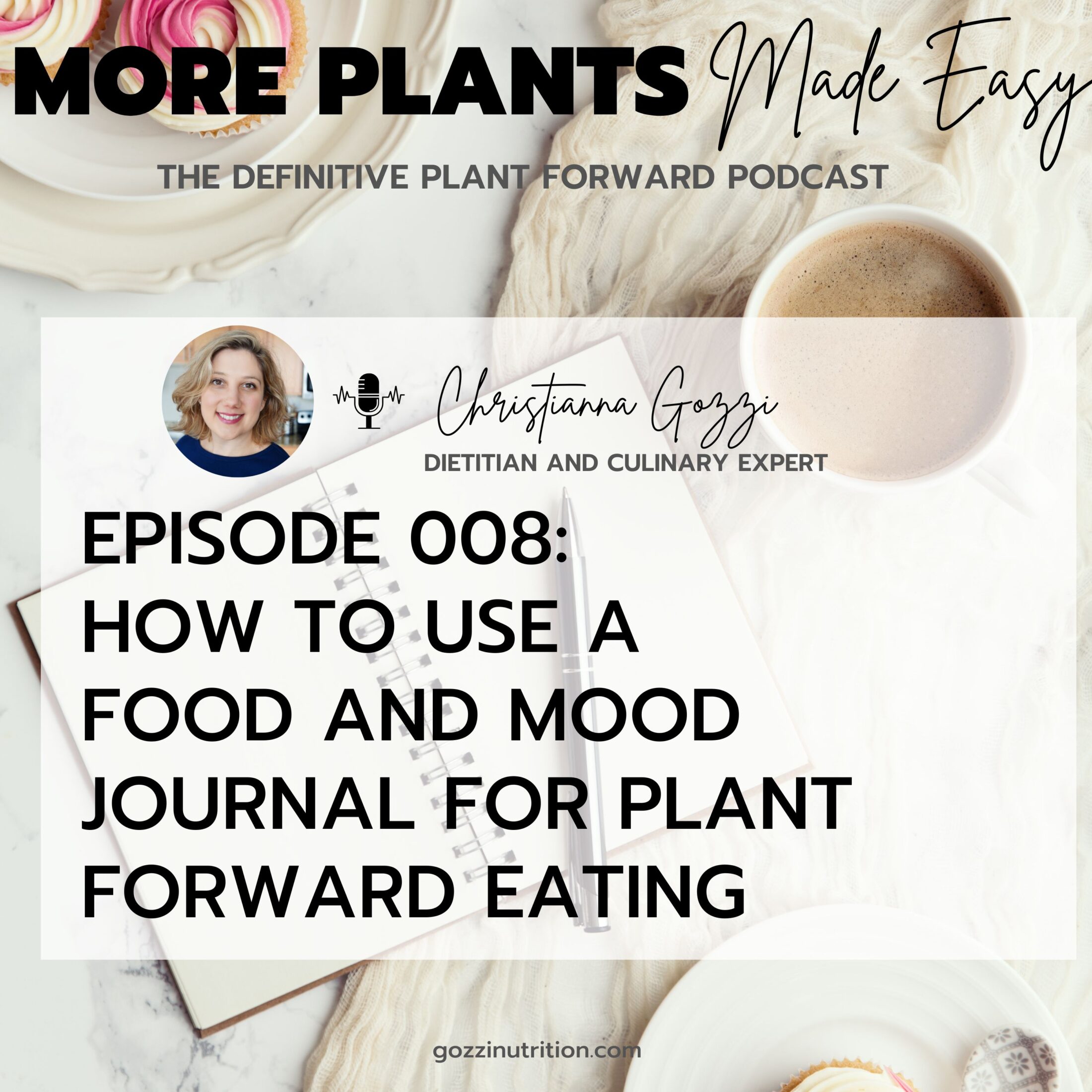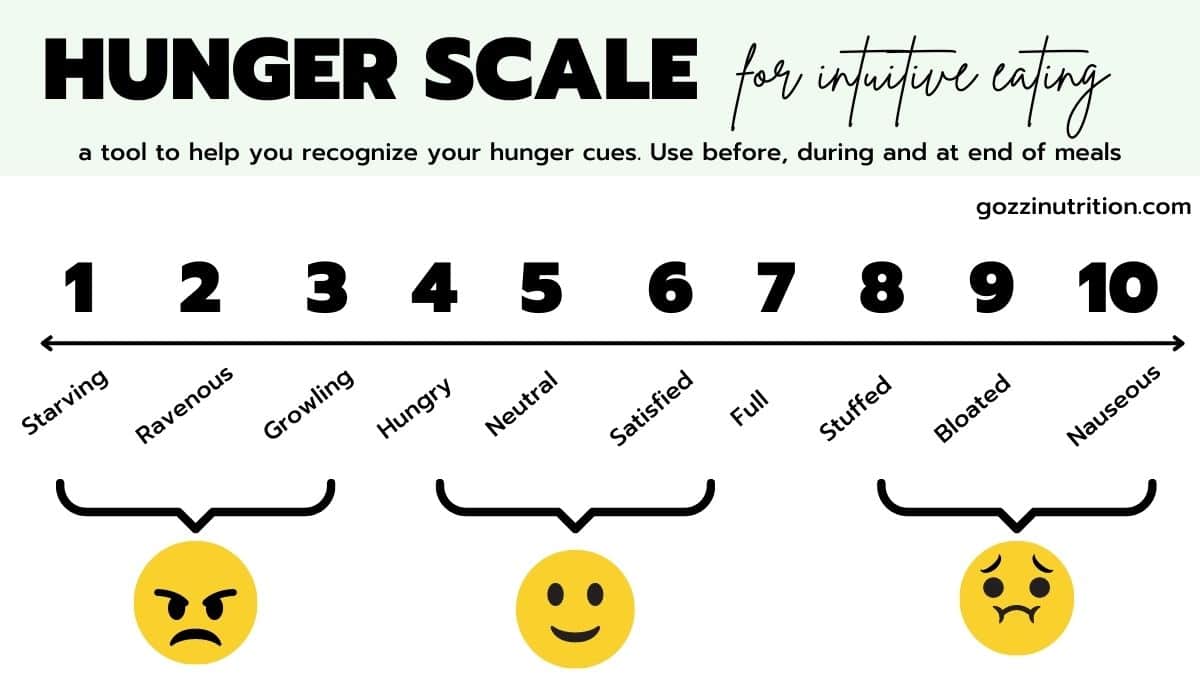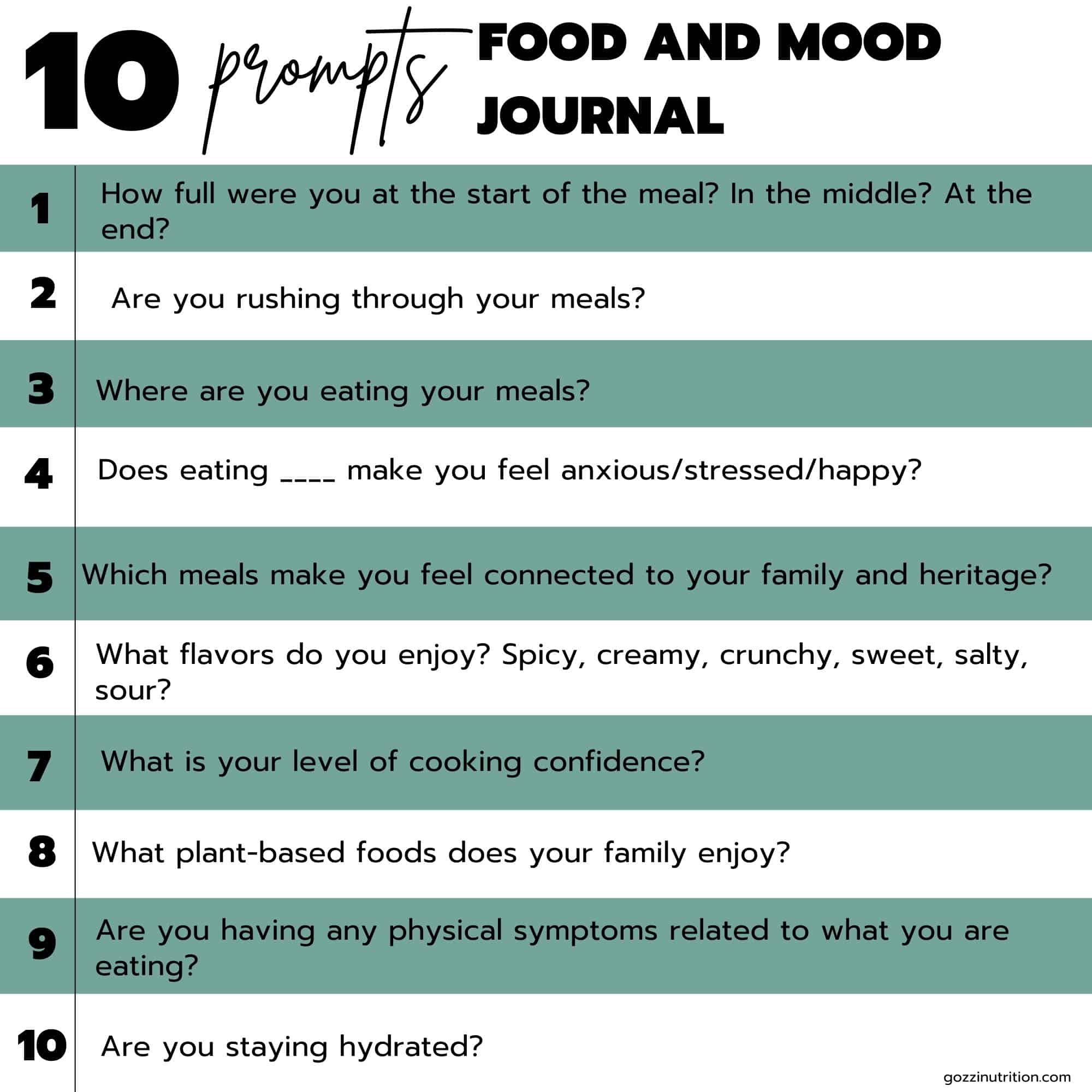Are you interested in learning more about food and mood journals? In this combined blog post and podcast episode, we cover the basics of how to use a food and mood journal for plant forward eating, what questions to include in your food and mood journal and how to get started today.
Table of Contents
What is a food and mood journal?
A food and mood journal, sometimes called a food and mood diary, is a journal devoted to capturing what you ate over a specific period of time and how those foods made you feel, both mentally and physically.
The food and mood journal is used in a variety of settings. It is best used with the regular support of a registered dietitian who can help you analyze your thoughts and provide constructive behavior-based advice for making adjustments.

How is a food and mood journal different from food tracking?
Food tracking (or meal logging) and food and mood journaling have different goals. Food tracking is used most commonly to monitor physical symptoms, count calories and track weight loss and weight gain.
You may be familiar with programs like MyFitness Pal where you can set a calorie limit or weight loss goal. All tracking revolves around restriction.
The goal of a food and mood journal is to understand how certain foods make you feel emotionally and physically. This usually does not include tracking calories (and in my program never involves a calorie restriction).
Food and mood journaling is based around the principles of intuitive eating and is a guide to help you recover your relationship with food.
Is a food and mood journal right for you?
I recommend a food and mood journal for all my clients because it helps them reflect on the process of making changes to their eating style. In my program, I can see their food and mood journals, so it is also a great way for me to connect with them in between our in person sessions.
If you have a history of disordered eating or have become obsessed with tracking meals in the past, any kind of food journal may not be the best idea. On the other hand, it could be a useful tool to help you learn more about unrestricted eating.
It really depends on the person and it is best to explore this with your dietitian and, if you have a history of disordered eating, with your mental health provider.
What’s the best way to keep a food and mood journal?
A food and mood journal can be digital or paper-based. There is no right or wrong way to capture your thoughts, but whichever method you choose should be convenient for you.
How can food and mood journals help plant-forward eaters?
The food and mood journal is a very helpful tool when transitioning from meat-based eating to plant-forward and plant-based eating.
It can help clarify the feelings, challenges and triumphs you have around trying new foods.
What information should be included in a food and mood journal?
The goal of eating is satisfaction, so the goal of your journal is to better understand how what you are eating is satisfying you. I like to illustrate this as the “3 F’s of Food Satisfaction.”
- Fullness (physical satisfaction that comes from eating balanced meals).
- Family and friends (food connects us to our heritage and other people)
- Flavor (sensory aspects of food like aroma, flavor, color, and texture)
Satisfaction is most likely to occur when all threes “F’s” are met. Remember, though, you are learning and even when you become more experienced at plant based nutrition, not every meal can or will be balanced.
Here are some journal prompts to get you started
Level of physical hunger
It can be very helpful to understand hunger cues. A food and mood journal can help you track how hungry you are before, during and after a meal.
Of course, you don’t need to do this for every meal, but I suggest familiarizing yourself with the hunger scale. This scale below is a great resource to learn about hunger cues from an intuitive eating perspective.
- How full were you at the start of the meal?
- How full were you in the middle of the meal?
- How full were you at the end of the meal?

How you feel emotionally about what you’re eating
Emotions, human connection and happiness play a large role in the satisfaction of the eating experience. Remember that food connects us to our heritage and other people.
- Are you rushing through meals?
- Where are you eating your meals (at your desk, while watching TV, etc)
- Does eating ____ make you feel anxious/stressed/happy?
- Which meals make you feel connected to your family?
- Which foods help you feel connected to your heritage and why?
Sensory considerations in the eating and cooking experience
- What flavors do you enjoy?
- Do you like spicy, creamy, crunchy, sweet, salty, sour?
- What are you currently craving?
- What foods/meals smell good to you?
- Which meals did you enjoy cooking and why?
- What plant-based foods do your partner and/or kids enjoy?
- What colors are on your plate?
Physical symptoms you experience around eating certain foods
This is especially important if you are trying to understand how foods exacerbate the physical symptoms that may have brought to a dietitian in the first place.
- Are you having regular bowel movements?
- Do you suffer from diarrhea or constipation?
- Heartburn and burping?
- Excessive gas and bloating?
- Are you staying hydrated?
- Weight gain/weight loss (completely optional)

Final thoughts and how to get started on your food and mood journal
In summary, a food and mood journal is a tool to help you better understand which foods satisfy you as a transition to a plant based and plant forward diet.
Remember that the food and mood journal should work for you. Consider what form is most convenient for you and start there. Also consider how frequently you would like to update the journal. It can be weekly, daily or any other cadence that feels right to you.
I would love for you to download your free copy of my Plant Forward Made Easy Meal Prep Guide. As you try the recipes in the guide, remember to add them to your food and mood journal.
Email: [email protected]
Connect with Christianna
LinkedIn | Instagram | TikTok | Facebook
Learn about the Plant-Forward Playbook Nutrition Coaching Program here.
Disclaimer: the content from this podcast is not medical nutrition therapy. It is for educational and informational purposes only. It is not a substitute or replacement for medical care. If you are seeking individualized nutrition care, contact a dietitian or physician in your area.